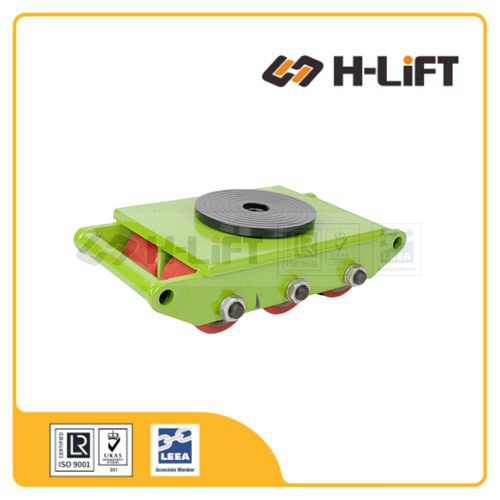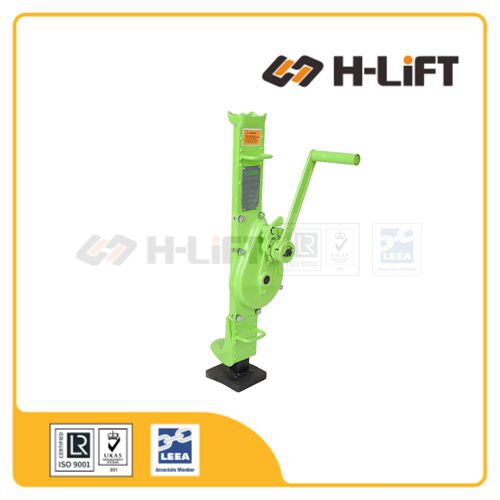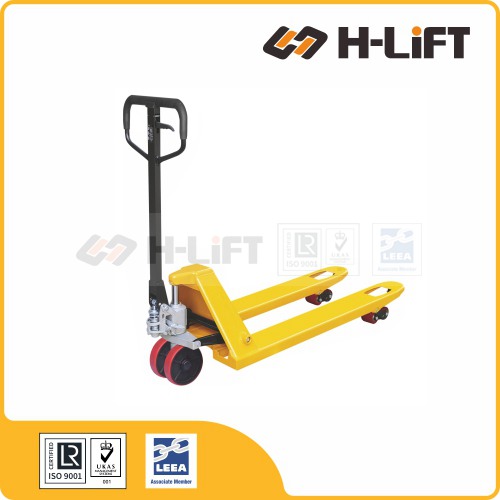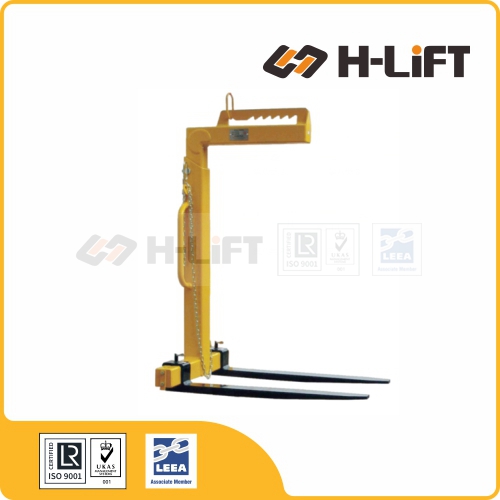ALWAYS:
• Store and handle jacks correctly.
• Inspect jacks before use and before placing into storage.
• Ensure the surface on which the jack is placed is level, even and capable of taking the imposed loads.
• Ensure the load is capable of withstanding the forces imposed by the jacking operation.
• Use packing capable of withstanding the imposed loads without crushing. Lift and lower in small stages using support packing to minimise load falls or the load coming onto a single jack.
• Ensure the jack is positioned so that the load is applied to the jack in the correct plane.
NEVER:
• Obliquely load jacks.
• Raise the load higher than necessary.
• Over extend the jack.
• Leave a load supported solely on jacks.
• Reach under a load supported by jacks.
• Work or climb on a load supported by jacks.
Selecting the Correct Jack
Jacks may be hydraulic or mechanical in operation and are available in a range of capacities and designs. Select the jack to be used and plan the lift taking the following into account:
Type of jack - hydraulic, ratchet, screw, journal.
Capacity, closed height, lifting height, overall dimensions.
Accessories - toe or claw attachment - screwed ram and locking collar - calibrated gauges for load/pressure measurement.
Packing to be used during the jacking operation and/or to support the load when raised.
Storing and Handling Jacks
Never return damaged jacks to storage. They should be clean and, where necessary, protected from corrosion.
Jacks should be stored upright with the ram, rack, screw or journal lowered so that it is protected from damage whilst in store.
Operating levers, handles, tommy bars etc should be removed, clearly identified and stored separately.
Jacks should be handled with care.
Using Jacks Safely
Most jacking operations require the use of multiple jacks. Care is needed as it is not possible to raise or lower jacks in perfect unison. This results in an uneven loading condition with the load being transferred from one jack to another. It can be more hazardous when lowering as the jack being lowered transfers its share to the other jacks. The capacity of the jacks should be adequate to account for this. Steps should be taken to ensure the load is kept level within the limits of operation.
The following should also be taken into account:
Do not use defective jacks or inadequate packing etc.
Ensure the floor is capable of withstanding the imposed loads. Where necessary use floor plates to spread the load over a wider area. Avoid hidden dangers such as buried cables, pipes and ducts which may affect the load bearing capability of the floor.
The surface on which the jacks is placed should be level and even allowing it to sit firmly without tilting or rocking. Use packers if necessary.
The head of the jack should be in full, firm contact with the jacking point of the load. Use packers if necessary to prevent the head of the jack from slipping. Do not obliquely load the jack.
Never raise a load higher than necessary. Special care is also necessary when lowering loads. Use a system of jacking and packing to ensure the load will not tilt or fall in the event of jack failure.
Never over extend a jack.
Never leave a load supported on jacks. Use packing, screwed collars, trestles etc which are capable of withstanding the imposed load without crushing.
Never reach under, work or climb on a load supported by jacks. Always keep hands and toes clear.
In-service Inspection and Maintenance
Jacks should be cleaned to remove any dirt or debris paying particular attention to racks, screws, the area around top ram seals etc. Hydraulic oil levels should be checked and the oil topped up or drained and replaced. Moving mechanical components should be lubricated etc. Care is necessary in the case of ratchet jacks as excessive grease can cause the holding pawl to stick or become retarded in operation allowing the rack to free fall thus dropping the load.
Regularly inspect jacks and, in the event of the following defects, refer the jack to a Competent Person for thorough examination: jack fails to lift or lower; load slips or creeps down; damaged, cracked or distorted body; base cracked, distorted or does not sit solidly on the floor; operating lever/handle bent or cracked; toe or claw attachment cracked or distorted. In the case of hydraulic jacks: oil leaks; ram scored, nicked or distorted; release valve inoperative. In the case of mechanical jacks: rack teeth or screws chipped, worn or corroded; swivel head seized.








